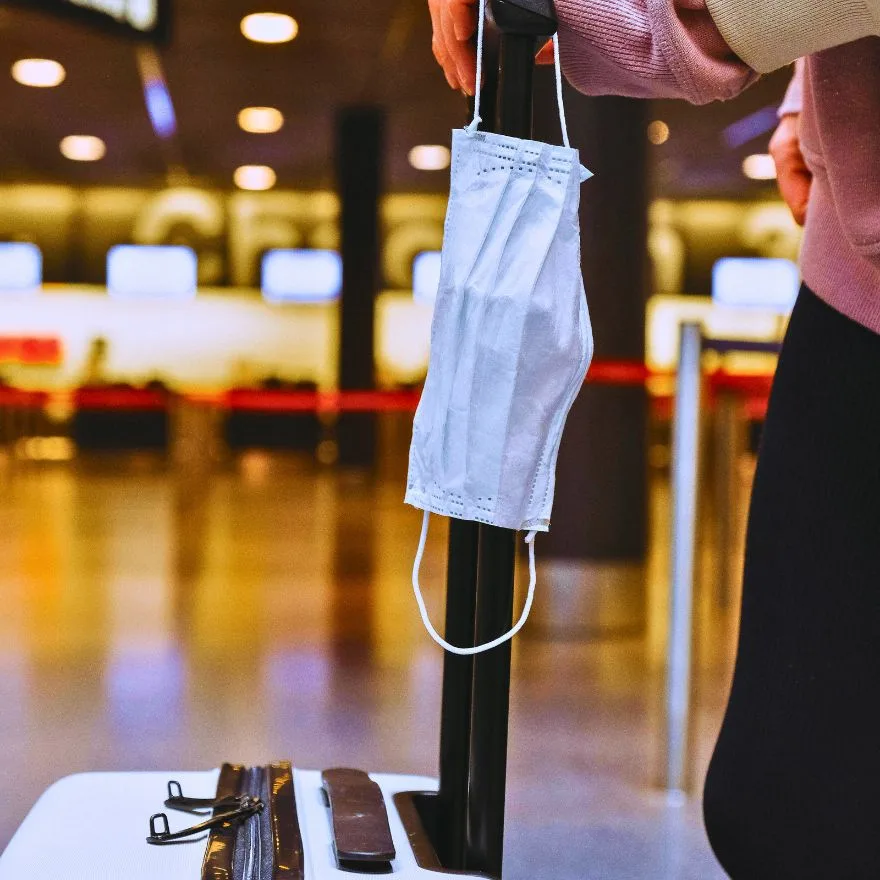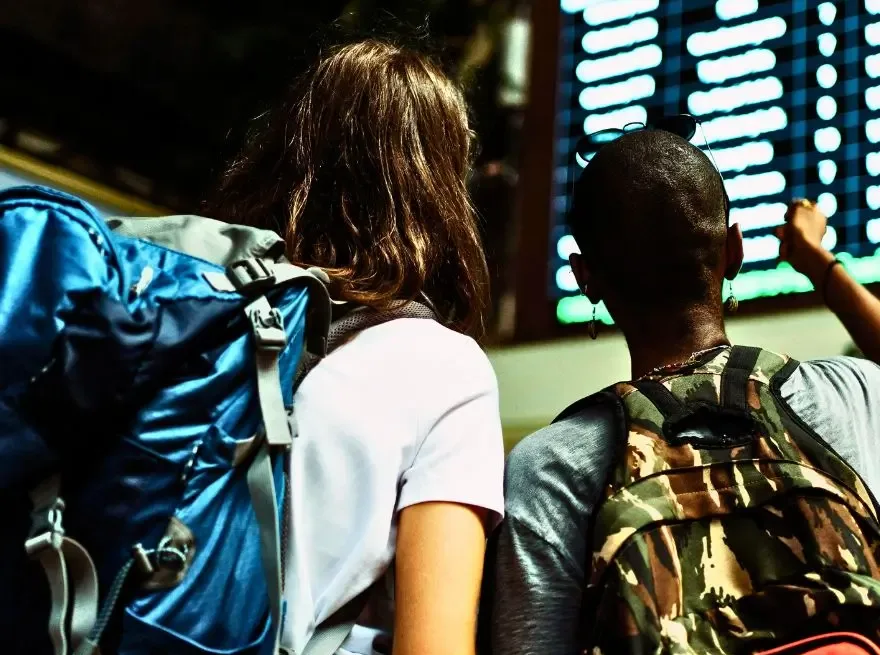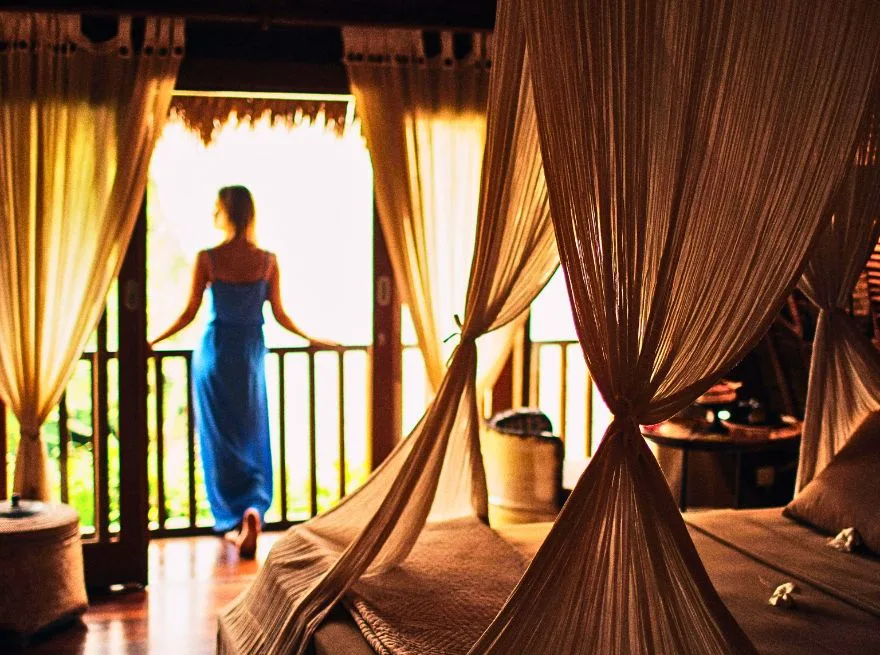The Sovereign Sanctuary of Stillness: Traveling as Inner Pilgrimage
We are, all of us, eternal travelers. Whether across continents or through the shifting landscapes of a single day, our lives are defined by movement, transition, and the thrilling, yet often jarring, experience of leaving one place for arriving at another.
For those walking the path of conscious living—the path of Inner Soaring—travel is a profound test. It strips away our comforting routines, dissolves the familiar boundaries of home, and deposits us into a vortex of sensory overload: the stale air of a cabin, the relentless chime of airport announcements, the ticking clock governing our connection fate, and the dizzying disorientation of a thousand unfamiliar faces.
Travel, in essence, is a masterclass in losing control.
And yet, it is precisely in this surrender that the most potent spiritual work unfolds. The journey from front door to destination mirrors our inner journey: how we move through security lines reflects how we move through the mind’s chaos.
This guide is for every traveler who’s felt their chest tighten before takeoff, who’s struggled to rest mid-flight, who’s stepped into a foreign city with nerves bristling like static. These mindfulness practices—breathing, grounding, and noticing—are your anchors in the vast ocean of motion.
Your breath is your anchor.
Your body is your home.
Your awareness is your light.
Let’s pack these essentials and ensure that wherever you go, your truest self always arrives first.
The Weight We Carry: Understanding Travel Anxiety
Before techniques, let’s honor what truly happens. Travel anxiety isn’t weakness—it’s wisdom. You’re entrusting your life to metal wings, navigating systems you don’t know, adjusting to new clocks and cultures. Your nervous system is doing exactly what it evolved to do: stay alert.
Why Travel Anxiety Is Natural—Not a Weakness
Every traveler carries an invisible backpack of nervous energy. You are not overreacting—you’re adapting. Once we name this honestly, we can work with it rather than against it.
The Illusion of Lost Control

Our daily lives rest upon predictable structures. When we travel, we hand control to others: pilots, schedules, weather, customs lines. The moment we feel trapped—mid-flight, mid-line, mid-delay—the limbic system sounds the alarm.
We confuse external constraint for spiritual confinement, forgetting that our inner landscape remains free. True freedom is not the absence of external barriers, but the ability to choose your response within them.
Mindful Travel Tip: The airport gate might be closed, but your breath remains open.
Releasing the need for external control allows the nervous system to soften its stance of defense.
Sensory Overload and the Collapse of Boundaries
Airports are designed for efficiency, not serenity. Bright, loud, crowded—each sound and scent is a tiny wave against the nervous system.
Our energetic fields, usually held within quiet homes, now brush against thousands of others. The traveler’s instinct is to armor up—to hunch, scowl, or mentally withdraw. Yet this only deepens isolation.
The solution is not to block out the world, but to receive it differently. Shift from reactive filtering (“this noise ruins my peace”) to gentle noticing (“I notice a loud sound”).
This single shift—naming without judging—is the bridge from anxiety to presence.
The Tyranny of the Schedule
Modern travel compresses life into deadlines. Boarding times, connections, check-ins—our awareness is pulled violently forward. We treat the journey as an obstacle to “real” experience.
But this constant future-focus floods the body with cortisol and fragments our presence. Our minds sprint ahead while our bodies lag behind in a different timezone.
Mindful Travel Reminder: The present moment is the only gate that never closes.
Paradoxically, time softens when we surrender to it. The more present you are, the smoother the journey feels.
The Three Pillars of Calm Travel: Breathing, Grounding & Noticing
You can’t control the chaos outside, but you can build an inner architecture the chaos cannot enter. These are your non-negotiable carry-ons: three gentle practices that transform every border crossing into a meditation.
The Airport: A Meditation Hall in Disguise
Airports, once seen as fluorescent purgatories, can become unexpected teachers. The crowds, noise, and waiting test your ability to remain.
Before you check in, pause. Find a quiet corner near a window and practice what I call “Arrival Acknowledgment.”

Place one hand on your heart and one on your belly. Take three deep breaths and silently affirm:
“I have arrived in this moment. I am exactly where I need to be.”
In that instant, you interrupt the forward-leaning anxiety that characterizes most travel. You reclaim your presence before the plane even leaves the ground.
Turning Security Lines into Moving Meditations
A monk once told me in a Kathmandu airport, “I walk slowly, even when standing still.”
Stand with both feet grounded. Feel your weight. Scan your body with each breath: unclench the jaw, drop the shoulders, deepen the inhale.
As the line moves, move mindfully. Each step becomes a small bow to presence. The wait stops being wasted time—it becomes found time.
In Flight: Breathing Through Turbulence
The sky magnifies everything. Recycled air, confined space, lack of control—all test the nervous system. Yet turbulence can become your cue for practice rather than panic.
The 4-7-8 Breath: Your Pocket Tranquilizer
This breath, popularized by Dr. Andrew Weil, activates your parasympathetic “rest and digest” system—the body’s natural calm switch.
Preparation: Exhale completely through your mouth with a gentle whoosh.
Inhale (4): Inhale quietly through your nose for a count of four.
Hold (7): Hold your breath for seven counts.
Exhale (8): Exhale fully with a whoosh for eight counts.
Repeat: Complete four cycles.
If seven feels too long, shorten it—but always let the exhale be longest.
Use it:
- Before boarding, to dissolve “what-if” spirals.
- During turbulence, to anchor in rhythm instead of fear.
- After rushing between gates, to downshift adrenaline before the next step.
The whoosh isn’t noise—it’s surrender.
Box Breathing (Sama Vritti): The Layover’s Lifeline
When hours stretch between flights, this even rhythm keeps your inner sea calm.
Inhale (4) → Hold (4) → Exhale (4) → Hold (4)
Visualize a perfect square of breath. Repeat for several minutes.
Use it to:
- Reset during long layovers instead of doom-scrolling.
- Transition from boarding chaos to in-flight peace.
- Prepare for arrival, easing your nervous system back to earth.
This balanced breath unites mind, lungs, and heart into one quiet rhythm.
The Five Senses Grounding Technique
When fear stories start mid-flight, awaken your senses. This is one of the simplest, most effective mindfulness exercises for travel anxiety.
- See five things. Name them in detail—the shade of the seat fabric, the pattern on the safety card.
- Touch four things. Feel texture, pressure, warmth.
- Hear three sounds—the hum of engines, the click of trays.
- Smell two scents—the coffee, the recycled air.
- Taste one thing—the sip of water or mint gum.
Each detail returns you to reality, where the mind’s catastrophe scripts dissolve in the present moment’s simplicity.
Anchoring to the Earth: Grounding Practices

Air travel disconnects us—literally—from the ground. Grounding re-tethers body and awareness, reminding you: I am here, in this body, now.
Physical Anchoring: The Seat as Sanctuary
Feel the Gravity. Direct awareness to your lower body. Intend to sink into the seat.
Sense the Contact. Notice the weight of your body supported by fabric and frame.
Root the Feet. Wiggle toes, feel soles pressed to the floor. Imagine roots descending deep into the earth—even through the metal hull of the plane.
Embrace the Heaviness. Let yourself be held. The seat holds you. The plane holds the seat. The earth holds the plane.
During discomfort or restlessness, this simple act of conscious sinking transforms resistance into rest.
Grounding turns confinement into containment—one holds you, the other frees you.
Grounding After Landing: Reconnecting to New Places with Presence
Landing in new air can feel like landing in new skin. Different light, sounds, languages.
As soon as you arrive, before unpacking, try this Four Directions Check-In:
- Face north, south, east, west.
- Breathe deeply in each direction.
- Notice the light, sound, and air quality.
Then place both hands on the earth (or the floor if indoors) and whisper:
“I am here. I have arrived. This ground holds me.”
This ritual, inspired by indigenous traditions, calms the inner compass and welcomes your spirit into new geography.
Night Arrivals: When Everything Feels Too Much
Late arrivals disorient even seasoned travelers. Exhaustion amplifies anxiety.
Before sleep, do a Safe Space Scan.
- Look around. Identify the door, window, corners.
- Place hands over your heart and breathe.
- Repeat silently: I am safe. I am exactly where I need to be. This moment is enough.
You are teaching your nervous system the language of reassurance.
Dealing with Disruptions: The Unexpected as Practice
Flight delays, lost bags, missed connections—each is a lesson in equanimity disguised as inconvenience.
I learned this in Delhi, when three canceled flights unraveled my plans. At the edge of breakdown, I remembered a teacher’s words:
“Resistance to what is creates suffering. Acceptance of what is creates peace.”
So I stopped fighting reality. I breathed. I waited. And peace—not perfection—arrived.

The RAIN Technique for Travel Challenges
Recognize what’s happening: “My flight is delayed. I feel frustrated.”
Allow the feeling to exist. Don’t exile it.
Investigate how it lives in your body.
Nurture yourself with compassion: “This is hard. You’re doing your best.”
You may still wait hours, but you’ll no longer suffer every minute of them.
Mindfulness for flight delays, missed connections, and travel chaos.
The Noticing Practice: Presence as the Journey
Beyond all techniques lies the simplest practice of all: noticing.
Ask often, “What am I noticing right now?”
In the taxi: the driver’s pendant swaying.
In a café: the rhythm of language around you.
On the street: the way sunlight bends between buildings.
This is the essence of mindful travel—the art of paying attention without labeling. The world opens its quiet miracles when you stop narrating and start witnessing.
Creating Your Personal Practice: What Works for You
These practices are invitations, not prescriptions. Each nervous system is unique.
Try one on your next short trip:
- Experiment with 4-7-8 breathing before boarding.
- Practice Box Breathing during layovers.
- Ground with Five Senses while waiting in line.
Keep a small journal—note sensations, not events. Build your toolkit from what resonates.
The Deeper Journey: Why This Matters
Mindful travel is not about bypassing stress but meeting it with grace. It turns airports into classrooms, turbulence into teachers, and arrival halls into temples of awareness.
The calm you cultivate in motion ripples into every still moment of life.
When you resist delays, you suffer twice. When you surrender, you travel once.
The whole journey becomes the destination.
Beginning Right Where You Are
You don’t need your next big trip to begin. The practice starts now—with the breath between this paragraph and the next.
Maybe it’s tomorrow’s commute. Maybe it’s a simple walk. Every movement is a chance to practice presence—to trade panic for peace, control for curiosity.
Take three conscious breaths before you step out the door. Notice five things. Whisper to yourself, I have arrived.
And notice what changes.
The breath between borders isn’t empty space.
It’s the place where you meet yourself—again and again—in the only moment that truly exists: this one.
Safe travels, friends.
And more importantly, present travels.






[…] you’d like to deepen your practice of grounding and mindful travel, read my post👉 Breath Between Borders: How to Stay Peaceful, Present, and Grounded Wherever You Go—a gentle companion piece that explores how to stay rooted and serene, no matter where your […]